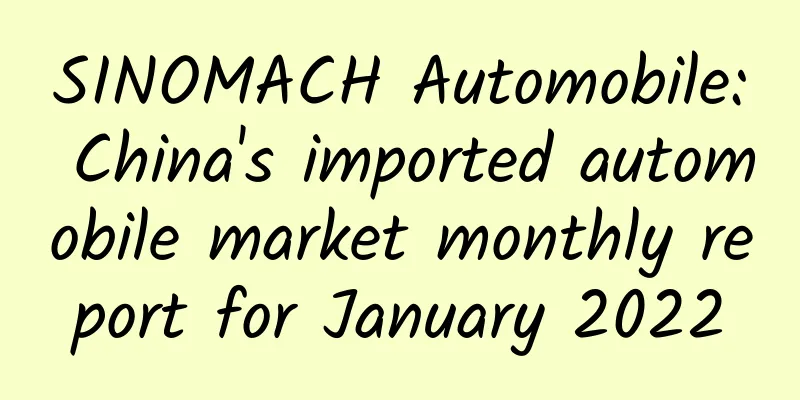SINOMACH Automobile: China's imported automobile market monthly report for January 2022

|
1. Supply 2. Demand As supply was less than demand in 2019-2020, the inventory depth of the entire imported automobile industry showed a significant decline. In 2021-2022, supply and demand were basically balanced, but sales declined and the inventory depth rebounded to 2.7 months. From a historical perspective, it is at a reasonably low level. The unit price of imported automobile customs declarations has increased year by year. From 2015 to 2022, the unit price of imported automobile customs declarations increased from 252,100 yuan to 396,600 yuan. One is the trend of consumption upgrading, and the other is the trend of localization of low-priced products. There is a clear trend of upgrading in imported car consumption. In January, the decline in luxury and super luxury brands was significantly lower than that of non-luxury brands. "Luxury" continued to rise, with luxury cars accounting for more than 90%. VI. Vehicle Structure 7. Displacement down 8. Sales of imported new energy vehicles fluctuate |
<<: Can customization help home appliance companies break out of the cold winter?
>>: Harvard University: 4-20% of women of childbearing age worldwide have polycystic ovary syndrome
Recommend
Intel evaluates AMD Ryzen: Kaby Lake is enough to suppress
AMD Ryzen processor will be available at the end ...
Baidu search promotion negative keywords/What are precise negative keywords?
What are negative keywords/exact negative keyword...
YouTube video brick-moving money making project, use Xigua video to realize rapid monetization
YouTube video brick-moving money making project, ...
APP activity promotion and operation: Create these 3 emotions to warm up the activity
"Wolf Warrior 2" grossed over 1 billion...
Heavy rainfall hits the south again today! How to prevent floods and avoid risks scientifically?
Today, heavy rainfall in the south hit again. The...
How to avoid pitfalls when promoting on Xiaohongshu? Xiaohongshu marketing promotion guide!
At present, the hottest brand marketing and promo...
Will poverty households be eliminated in 2022? Can we still enjoy preferential policies in 2022 after getting rid of poverty?
By the end of 2020, my country had basically achi...
How to accurately estimate user intent when placing Baidu information flow ads in the home improvement industry?
The home improvement industry is a typical large ...
In addition to blind boxes and Bilibili, how will the post-95s lead new marketing trends in the next 10 years?
1. Three characteristics of future consumption th...
The most comprehensive guide to attracting customers to Xiaohongshu
In the Internet community in 2019, while self-med...
Super Fans Pass | Is Super Fans really useful? Here are four early adopter cases, and the data speaks for itself!
1. Added advertising types, you can choose market...
From 0 to 1, how to plan your own promotion channels?
As a newbie in the operation circle, I still don’...
Soul Product Analysis Report
Soul was launched in 2016 and quickly captured th...
New research shows that Tyrannosaurus Rex may have a small "air conditioner" in its head
Every summer, I have to sigh that air conditionin...









